Area and perimeter of quadrilaterals
Categories: gcse geometry

A quadrilateral is a four-sided polygon. In this article, we will look at how to calculate the area and perimeter of various types of quadrilaterals.
Square
A square is a quadrilateral with four equal sides, and four equal angles of 90 degrees:
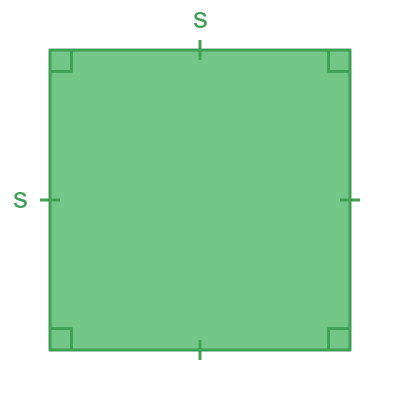
The perimeter is found by adding the lengths of all its sides. Since each side has length s, the perimeter is:
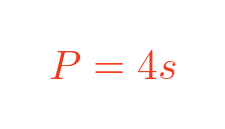
The area is the width times the height. Since the width and height are both s, the area is:
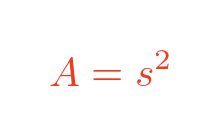
Rectangle
A rectangle is a quadrilateral with four equal angles of 90 degrees. The two opposite sides have equal lengths:
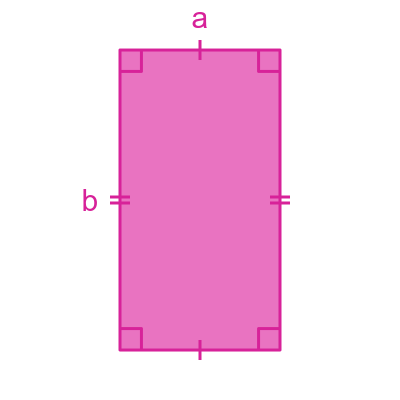
The perimeter is found by adding the lengths of all its sides. Since two sides have length a and two sides have length b, the perimeter is:
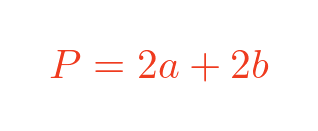
The area is the width, a times the height, b:
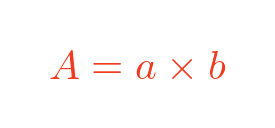
Trapezium
A trapezium is a quadrilateral that has two parallel sides:
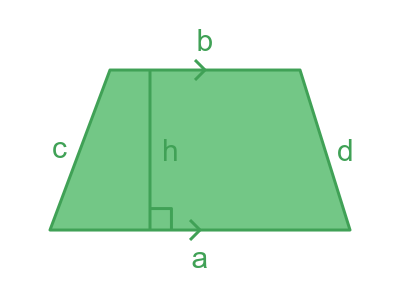
The perimeter is found by adding the lengths of all its sides. The lengths of the sides might all be different, but if we know the lengths we can add them together:

To calculate the area, you will need to know:
- The lengths of the two parallel sides (we will call them a and b).
- The height of the trapezium. That is the perpendicular distance between the two parallel sides.
To find the perpendicular distance between two parallel lines we must draw a line between them, at a right angle. The perpendicular distance is the length of that line.
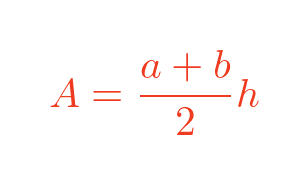
Why the trapezium area formula works
If we draw two identical trapeziums and rotate one by 180 degrees, we can join them to form a parallelogram:
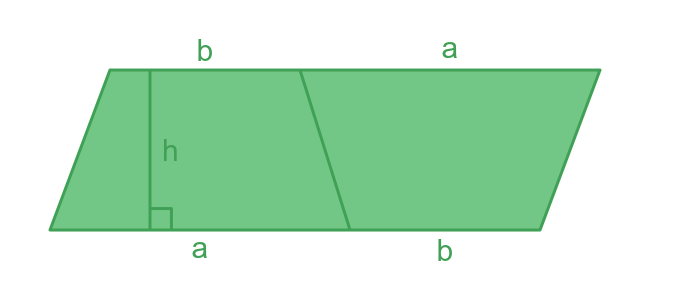
This trapezium has a width of a + b and a height of h.
We will see later that the area of a parallelogram is the width times the height, which in this case would be a + b times h. But since the parallelogram is made from two identical trapeziums, the area of each trapezium is half of that, which is the formula given above.
Another way to think of this is that (a + b)/2 is the average width of the trapezium. So the area is the average width times the height.
Finding the height of a trapezium
If you are not given the height of a trapezium, you can calculate it provided you know the length of one side and the angle it makes with one of the parallel sides. In this example we know the angle A and the side c:
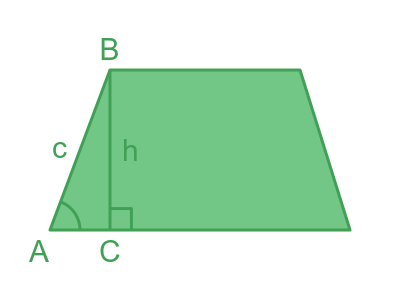
Here, the triangle ABC is a right-angled triangle. Side c is the hypotenuse, and side h is opposite the angle A. We can calculate h from:
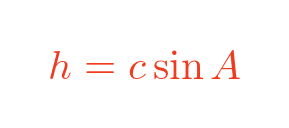
Knowing h, we can calculate the area from the formula above (we need to know sides a and b too, of course).
Parallelogram
A parallelogram is a quadrilateral where the two pairs of opposite sides are parallel. This also means that:
- The two pairs of opposite sides are equal.
- The opposite angles are equal.
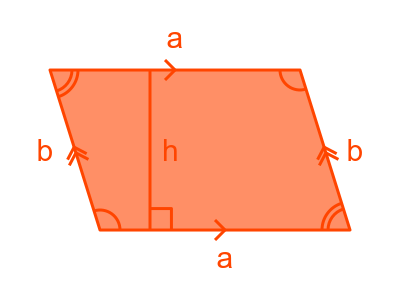
The perimeter is found by adding the lengths of all its sides. Since two sides have length a and two sides have length b, the perimeter is:

This is the same formula as for a rectangle.
The area of a parallelogram is equal to the base a times the height h. Note that we must use the height, not the side b.
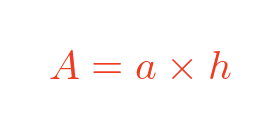
If we aren't given the height, we can calculate it from the side b and the angle between the side and the base. This is done in the same way as for a trapezium, above.
Why the parallelogram area formula works
If we take a parallelogram and remove the right-angled triangle from the left, and move it across to the right, we have a rectangle of width a and height h. This gives means that the area is a times h.
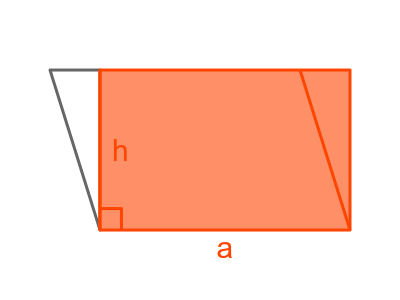
Rhombus
A rhombus is a parallelogram where all four sides are equal:
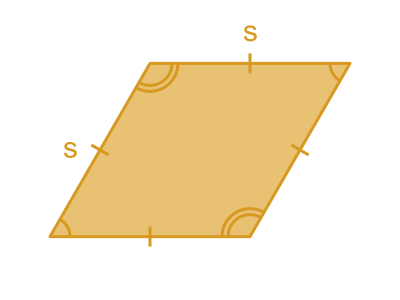
The perimeter of a rhombus is the same as the perimeter of a square:

The area of a rhombus is the same as the area of any other parallelogram:
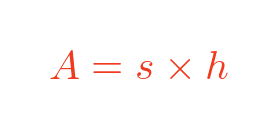
There is an alternative way of calculating the area of a rhombus if you are given the lengths of the diagonals. It works because a rhombus is a special type of kite, one in which all the sides are equal:
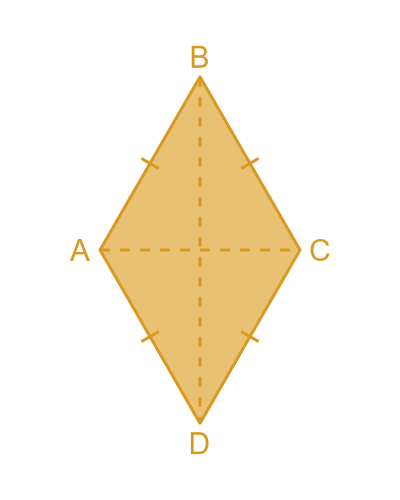
This means that we can also use the kite formula for the area, which is half the product of the diagonals (see below):
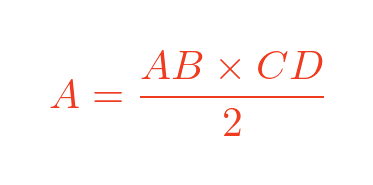
Kite
A kite is a quadrilateral in which two pairs of adjacent sides have equal lengths. In this diagram, both of the sides at the top have length a, and both sides at the bottom have length b:
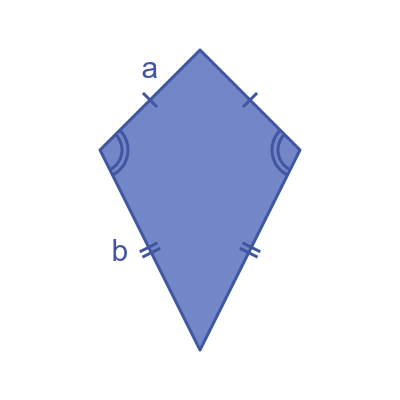
A kite is symmetrical about the horizontal line, This means that the angles at the left and right corners are equal, as shown.
The perimeter of a kite is found by adding the lengths of all the sides:

Kite area formula
We can draw a rectangle around a kite, like this:
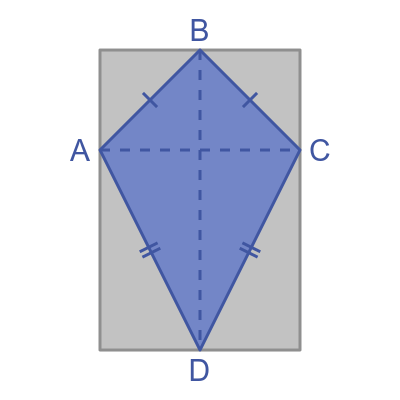
The diagonals divide the kite into four triangles. Each of those triangles is identical (congruent) to one of the grey triangles. This means that the kite is exactly half the area of the rectangle.
The width of the rectangle is the line AC (a diagonal of the kite). The height of the rectangle is the line BD (the other diagonal of the kite). So the area of the rectangle is the product of the two diagonals of the kite, and the area of the kite is half of that:

If you are not given the diagonals of the kite, for example if you only know the sides and angles, you will need to solve the triangles to find the diagonals.
See also

Join the GraphicMaths Newletter
Sign up using this form to receive an email when new content is added:
Popular tags
adder adjacency matrix alu and gate angle answers area argand diagram binary maths cartesian equation chain rule chord circle cofactor combinations complex modulus complex polygon complex power complex root cosh cosine cosine rule countable cpu cube decagon demorgans law derivative determinant diagonal directrix dodecagon eigenvalue eigenvector ellipse equilateral triangle euler eulers formula exercises exponent exponential exterior angle first principles flip-flop focus gabriels horn gradient graph hendecagon heptagon hexagon horizontal hyperbola hyperbolic function hyperbolic functions infinity integration by parts integration by substitution interior angle inverse hyperbolic function inverse matrix irrational irregular polygon isosceles trapezium isosceles triangle kite koch curve l system line integral locus maclaurin series major axis matrix matrix algebra mean minor axis n choose r nand gate newton raphson method nonagon nor gate normal normal distribution not gate octagon or gate parabola parallelogram parametric equation pentagon perimeter permutations polar coordinates polynomial power probability probability distribution product rule proof pythagoras proof quadrilateral questions radians radius rectangle regular polygon rhombus root sech segment set set-reset flip-flop sine sine rule sinh sloping lines solving equations solving triangles square square root standard curves standard deviation star polygon statistics straight line graphs surface of revolution symmetry tangent tanh transformation transformations trapezium triangle turtle graphics uncountable variance vertical volume volume of revolution xnor gate xor gate